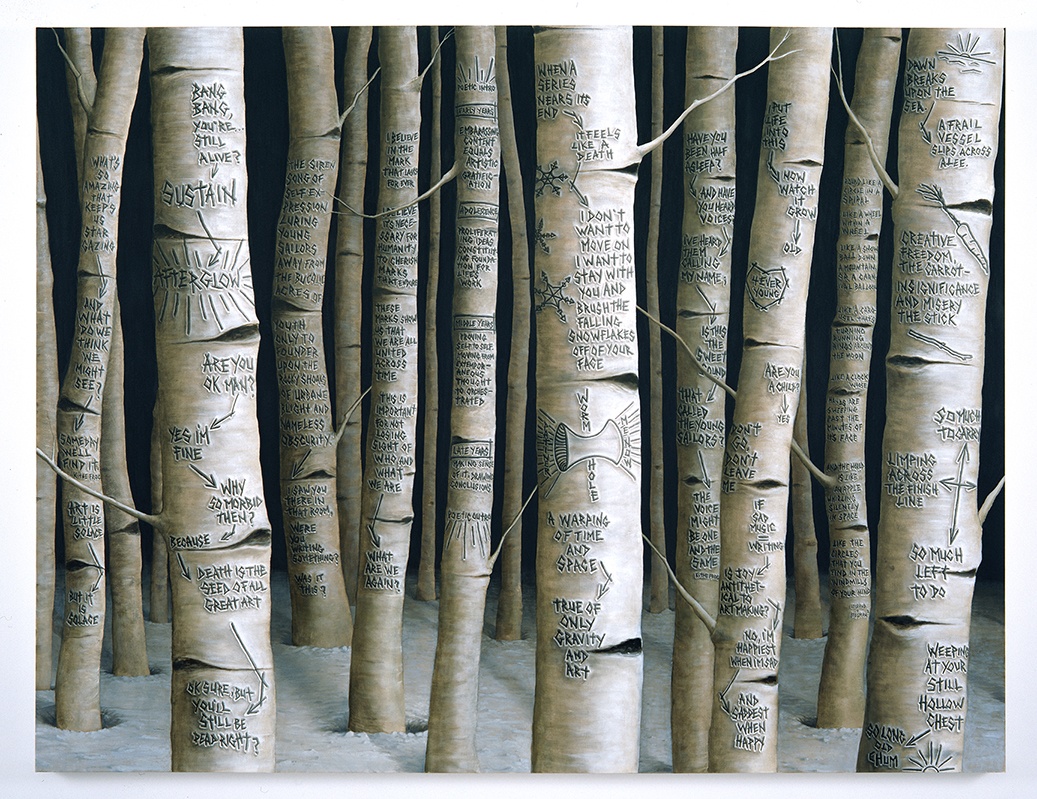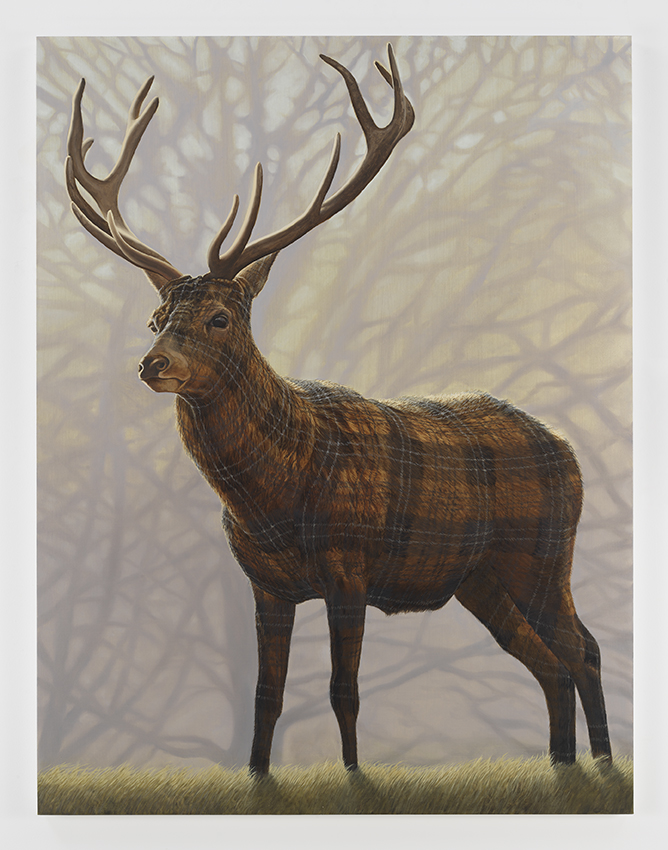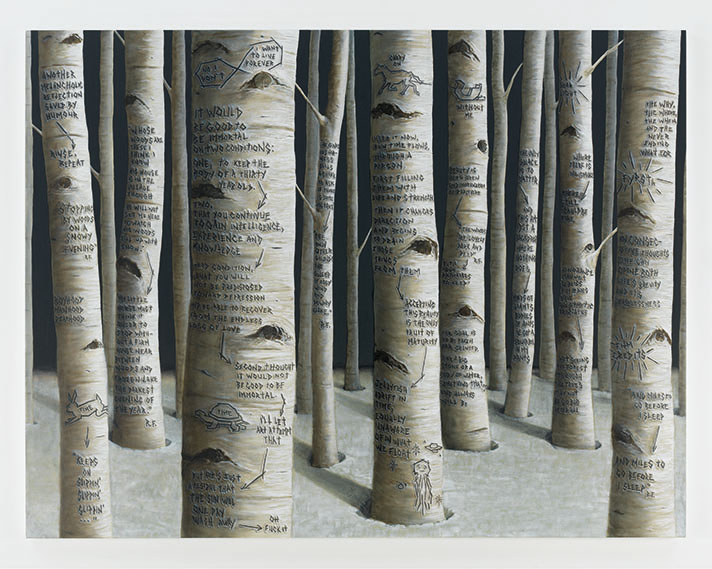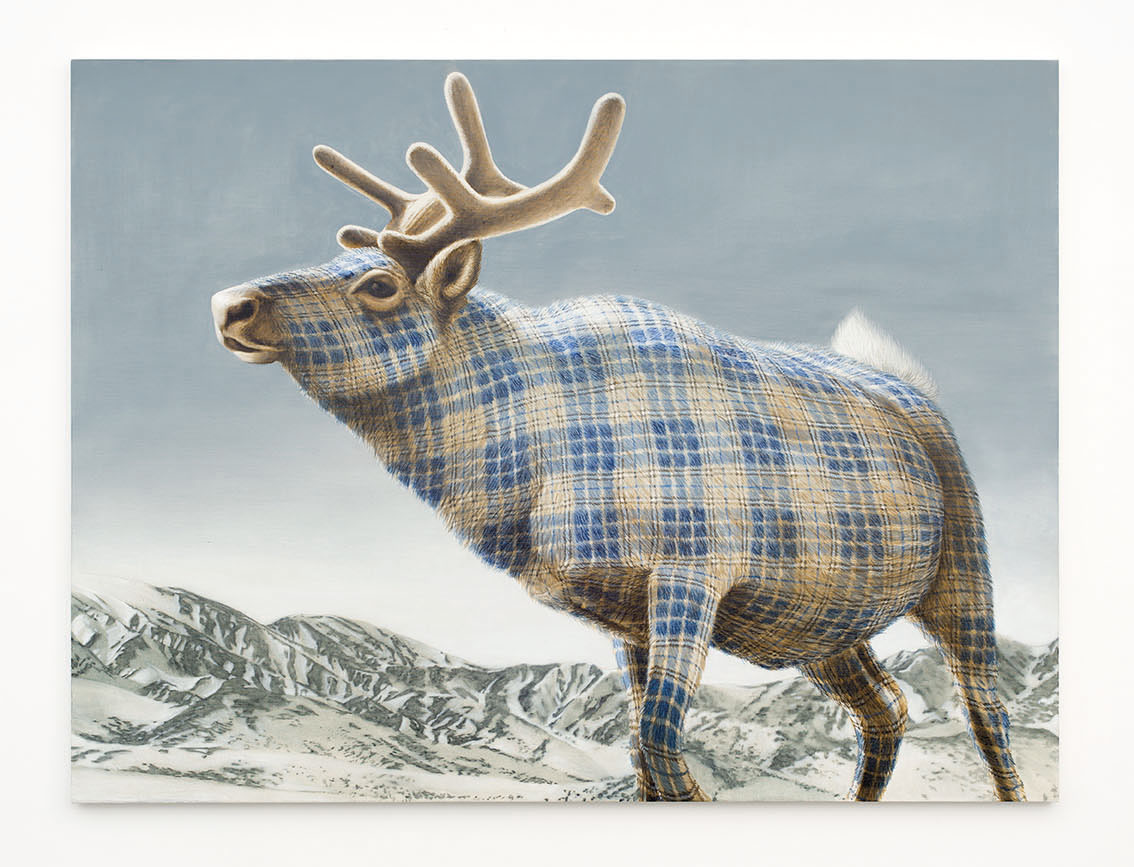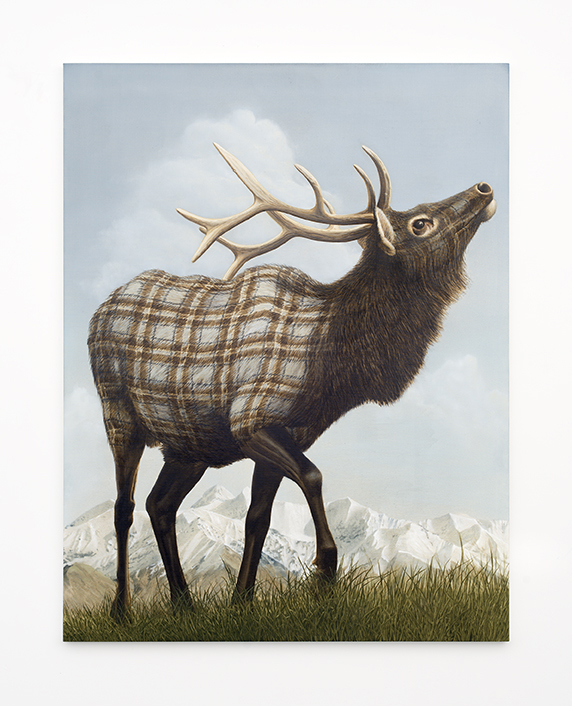Sean Landers
Sean Landers
| (Past) | 29.10.201529.10.15 — 19.12.201519.12.15 |
|---|---|
| (Gallery) | Rue de Livourne 35 Livornostraat |
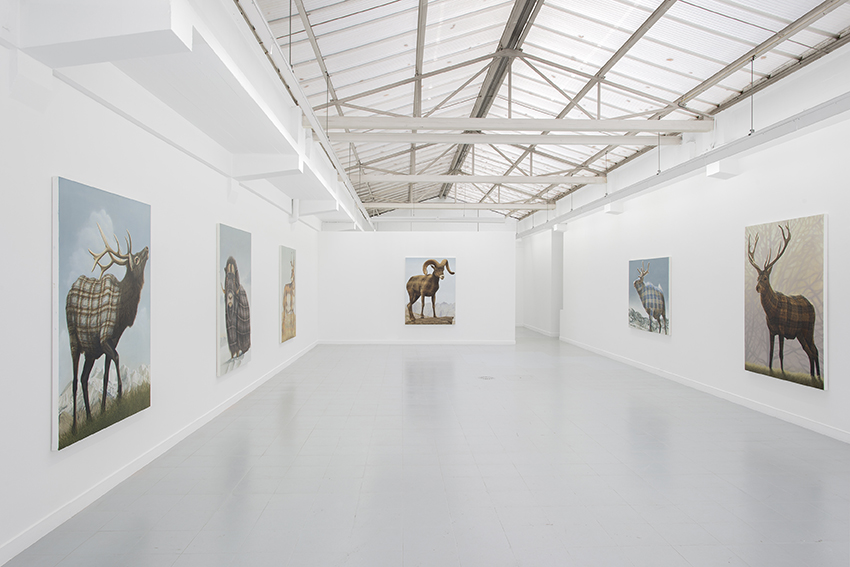
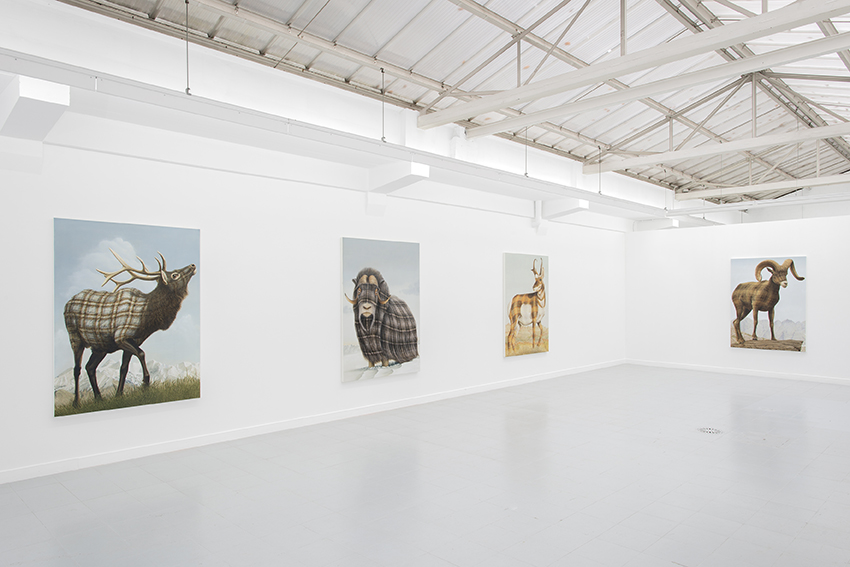
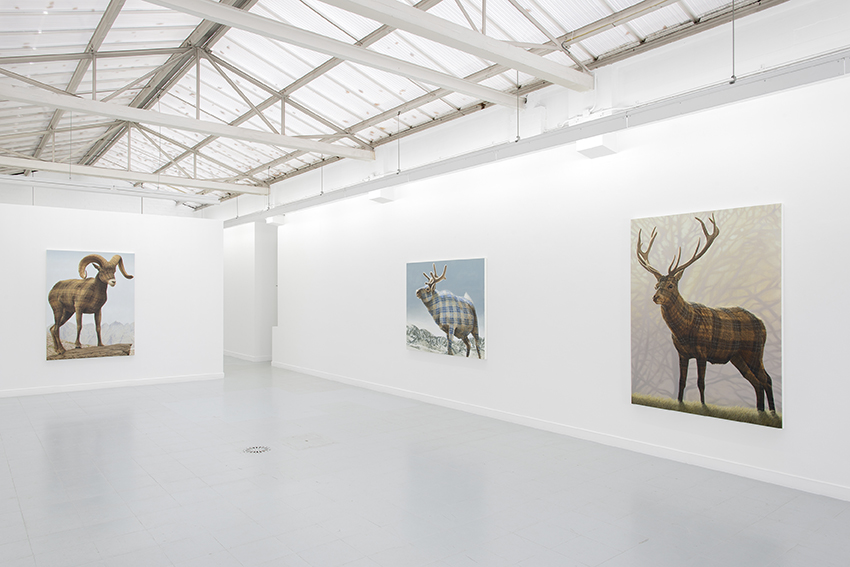
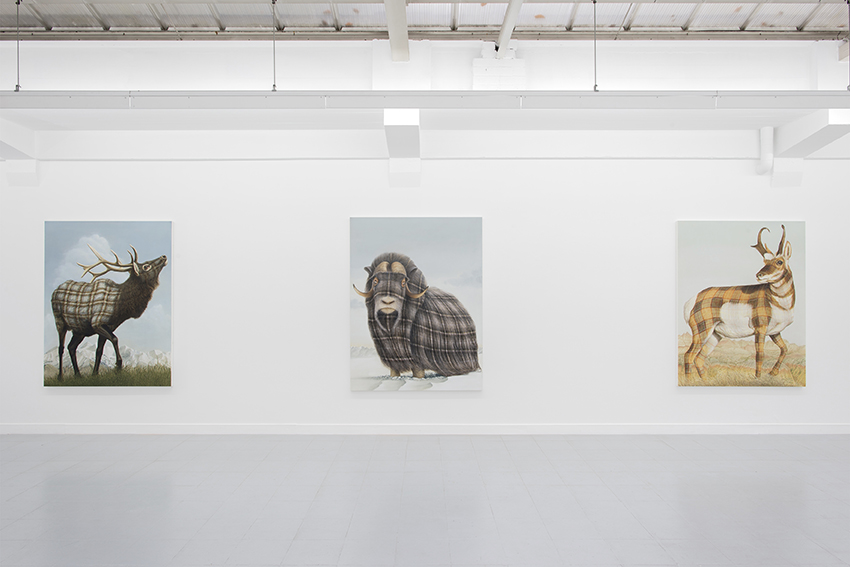
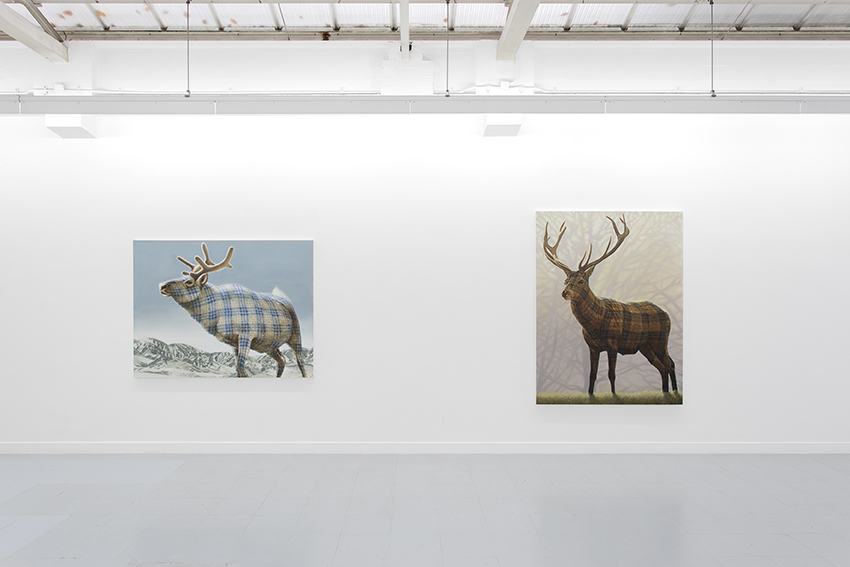
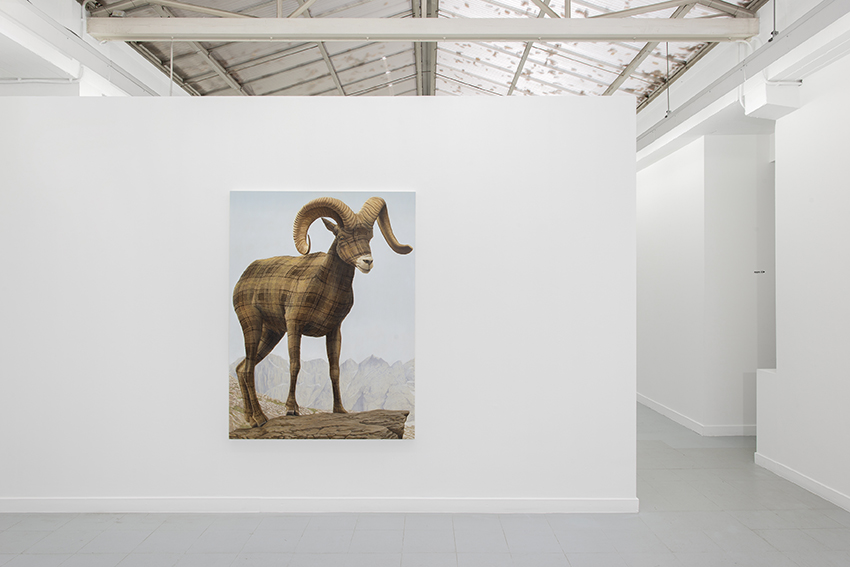
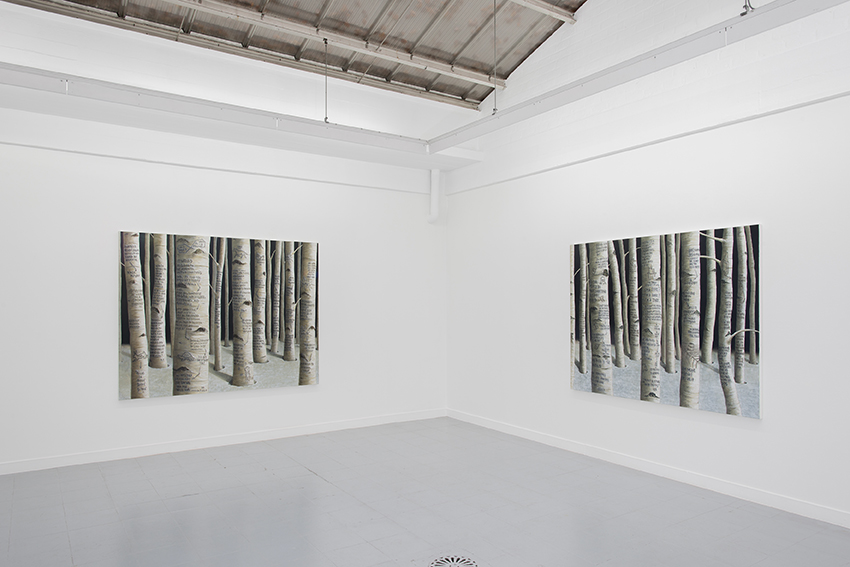
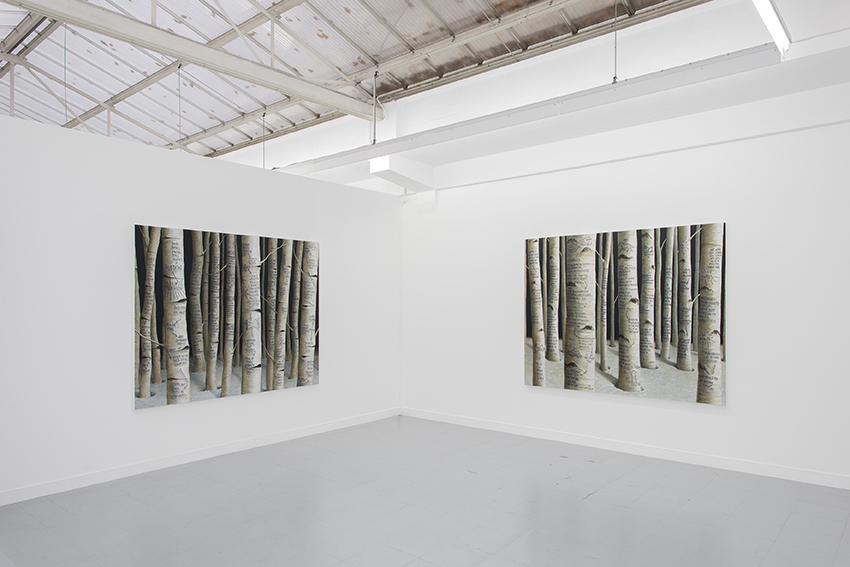
(01/08)Exhibition views
In 1948—a year when he and his brother were forging banknotes (and Braques, and Picassos) to make ends meet—René Magritte emerged from his studio with 30-odd paintings that bore little resemblance to the studied smoothness of prior years. Checkered cloth hastily adorned walls and tables, as practiced motifs became grotesque caricatures of their former selves. These were “bad” paintings; brash and uncontrolled, an “up yours” to the effete Parisian art world that had so snubbed Magritte during the interwar years. This was Magritte’s Periode Vache.
Not a single painting from the exhibition sold. Only one would be exhibited before his death. La Periode Vache seemed destined to linger in the shadows of Magritte’s artistic legacy.
Sean Landers was among the first American artists to rediscover these now important works. Throughout his career, Landers has delved into the artist’s consciousness, unpacking the nature of artistic production through personal experience. La Periode Vache, for Landers, is seminal, but he also sees it as a parable of the artistic legacy, of the cruel inevitability of time passing through the hands of an artist and his oeuvre.
For his second solo exhibition at Rodolphe Janssen, Landers will exhibit an homage to the Magritte’s Periode Vache with a continuing body of paintings depicting North American mammals—musk ox, elk, and caribou among them—each delicately coated in Scottish tartan.
Majestically posed within a shallow landscape, Landers fauna seem to exist within a diorama, his subjects trapped within a state of wild splendor and stasis. Their tartaned fur shimmers and moves like a protective blanket, shielding them from an eventual, presumable demise. Tartan, after all, is a system of tribal identification, a way to protect these animals “from indifference on their journey through time”, in Landers’ words.
Accompanying his animals are landscapes of aspen trees glowering warily at the audience from their dark and wintery rootings. Carved into their white bark are images and writing, both integral to Landers’ work since 1990. These humorous and poignant ruminations on the intertwined fates of an artwork and its maker reveal truths about what it means to be a sentient mortal being.
Artworks
(05)-
![Sean Landers, Afterglow]()
(Artist) Sean Landers (Title) Afterglow (Year) 2015 (medium) Oil on linen (Dimensions) 152.4 x 198.1 cm (Reference) SLan029 -
![Sean Landers, Red Deer]()
(Artist) Sean Landers (Title) Red Deer (Year) 2015 (medium) Oil on linen (Dimensions) 172.7 x 132.1 cm -
![Sean Landers, Stopping by Woods on a Snowy Evening]()
(Artist) Sean Landers (Title) Stopping by Woods on a Snowy Evening (Year) 2015 (medium) Oil on linen (Dimensions) 152.4 x 198.1 cm -
![Sean Landers, Juvenile Caribou]()
(Artist) Sean Landers (Title) Juvenile Caribou (Year) 2015 (medium) Oil on linen (Dimensions) 121.9 x 162.6 cm -
![Sean Landers, Elk]()
(Artist) Sean Landers (Title) Elk (Year) 2015 (medium) Oil on linen (Dimensions) 165.1 x 127 cm
